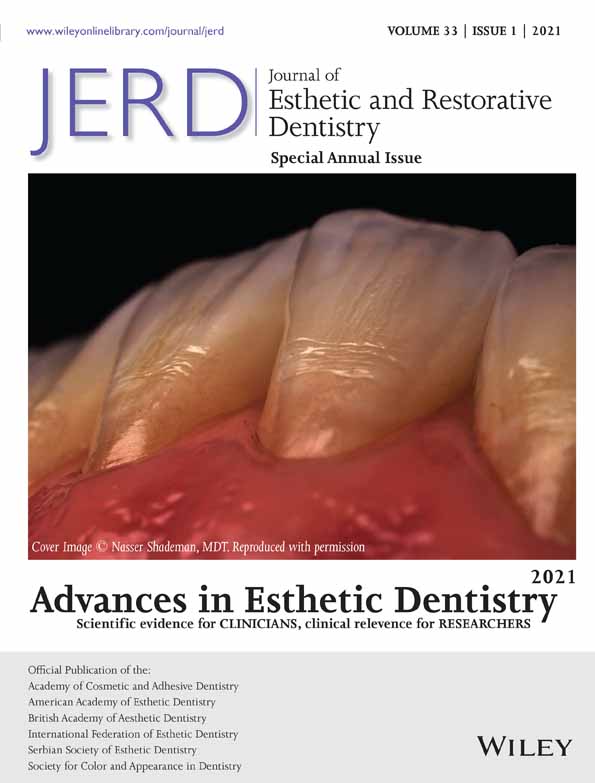The long-term stability of soft tissue augmentation in treatment of localized severe maxillary anterior ridge deformities
Abstract
The long-term stability of soft tissue augmentation in treatment of localized severe maxillary anterior ridge deformities.
Objective
Severely deformed edentulous ridges in the esthetic zone (EZ) are very difficult to restore with an esthetic fixed dental prosthesis (FDP). Soft tissue augmentation of these deformed ridges can dramatically improve the esthetics of the restoration. The long-term stability of soft tissue grafting used alone to treat severe localized alveolar ridge deformities will be reported.
Clinical Considerations
Three different soft tissue augmentation techniques, connective tissue graft (CTG), keratinized gingival graft (KGG), and pediculated connective tissue graft (PCTG) used to treat severe ridge deformities in the maxillary anterior region in five patients will be described. The stability of the augmentation will be shown at follow-up periods ranging from 5-30 years.
Conclusions
All three soft tissue grafting techniques demonstrated long-term stability following the six-month post-treatment result.
Clinical Significance
Edentulous ridges in the esthetic zone, with severe hard and soft tissue deformities, are very difficult to restore esthetically. The development of soft tissue augmentation techniques has allowed clinicians to enhance the esthetics of their fixed dental prostheses (FDP). Restorative clinicians need to be assured that soft tissue shrinkage under the pontics will not occur after the final prosthesis is seated. The stability of these soft tissue augmentations over an extended period of time, will be demonstrated in the presented cases.




